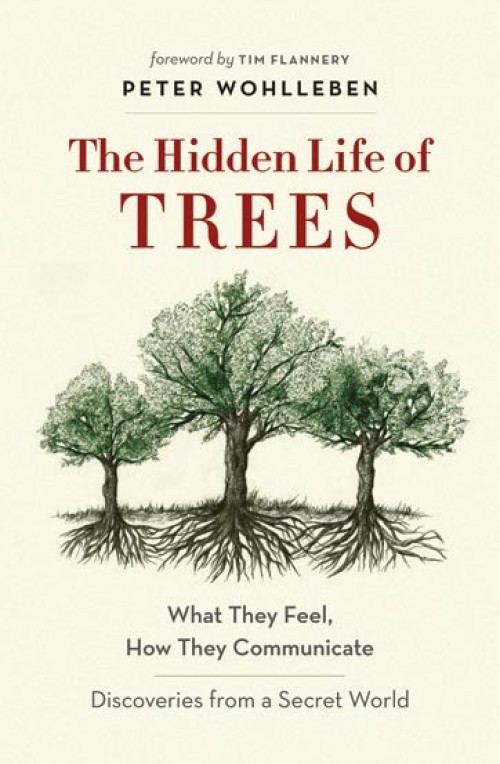by Peter Wohlleben
Greystone Books, 2015
About 25 years ago, I was thrilled to learn that Russian scientists had introduced radioactive material into a tree and found the same material in nearby trees, proving that trees are connected to one another in a root-system community. If you are reading this magazine, you like – even love – trees. If you’re like me, when you are in the woods, you frequently wonder about how trees do certain things. The Hidden Life of Trees: What they Feel, How they Communicate – Discoveries from a Secret World will answer many of your questions and many more you may have not thought to ask. While the book reports on a great deal of scientific research done over the past two decades, the results are presented in an extremely accessible and understandable manner.
Peter Wohlleben is a forester who manages a 3,000-acre town forest in Germany. In bringing local residents and visitors into the forest, he learned something important: when forest facts were presented in scientific terms, people tuned out. But when Wohlleben framed the science in terms of the lives of beings not so different from us, people got it.
The basis for much of what Wohlleben covers in the book is past research documenting the existence of a “wood wide web” – a below-ground alliance between fungi and trees in forests that can greatly increase water and mineral uptake. Dr. Suzanne Simard, who pioneered much of this research at the University of British Columbia, includes a note in the book explaining how new scientific tools have led to “discoveries that have transformed our understanding of trees from competitive crusaders of the self to members of a connected, relating, communicating system.” Wohlleben has read all of this technical research – nine pages of endnotes list the references – and has “translated” them, as he says, into a language framed with associations we can understand and identify with.
Wohlleben divides his small book into 36 short, focused chapters with titles like Friendships; The Language of Trees; Forest Etiquette; United We Stand, Divided We Fall; The Forest as Water Pump; Hibernation; Why Is the Forest Green?; and Immigrants.
Readers learn that trees can smell, taste, learn, and remember. They can also adjust their future behavior based on events like droughts, and communicate via pheromones, fungi, and “brain-like” electrical signals that travel via a form of nerve cells at the tips of the roots. Wohlleben explains that trees can identify which insects are eating them by sensing the insect’s unique saliva, and that they can then release pheromones that summon beneficial predatory insects. They can also alert nearby trees to the threat and give them some lead time to produce chemicals to deter the insects. Trees become active, living organisms, not just static structures.
This book is fun to read, and might be read chapter by chapter with a child. What better way to introduce a young person, middle school-aged and up, to the wonders and mysteries of trees and forests – and to foster a hunger to find out more – than by experiencing woods and trees and, in the process, possibly finding a future calling?


